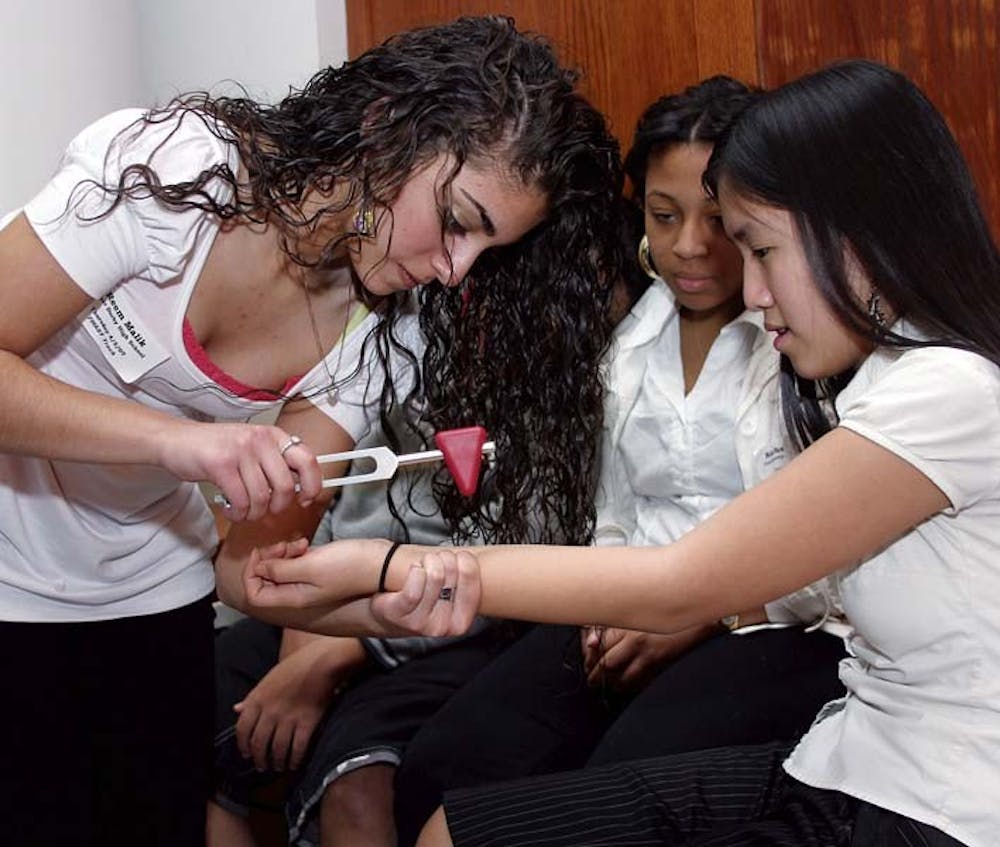In most cases, "school" tends not to rank among students' most popular spring break destinations.
But for a group of 30 Philadelphia high schoolers, visiting a Penn Anatomy Lab, performing neurological exams and listening to Psychiatry professor Benoit Dube show a Justin Timberlake video-spoof about "Bringing Paxil Back" is a long way from "school."
And these are only a few of the activities Penn School of Medicine students planned for FHAST Track 2007, a three-day seminar held this week for West and Southwest Philadelphia high-school students interested in medicine and the health profession.
FHAST - Future Healers and Scholars of Tomorrow - is a program developed with the goal of increasing the number of health professionals from minority and low-income backgrounds.
"As a med school, the best thing we can do is take kids interested in medicine and bring them in," said first-year medical student Dan Caroff, the FHAST Track student leader.
Beyond learning about diseases and treatment, the program emphasizes involvement in the field of health care.
"There aren't a lot of minority doctors, and there aren't a lot of doctors in minority areas," Caroff said. "This is a good way to address discrepancies in poor urban areas."
The program drew students from nine West and Southwest Philadelphia High Schools. Sayre High, University City High and West Philadelphia High were included, among others.
"The whole idea is to connect people to resources," first-year medical student Aura Obando said. "I think there's going to be a lot of follow-up."
Medical students explained that organizing community-outreach programs like FHAST Track is more than a teaching opportunity - it is the school's duty.
"We have so many resources as Med students," Caroff said. "For us, it's almost a responsibility to share what we have."
While the program is only in its first year, medical students hope to make it a once-a-semester event for years to come.
And, judging by student response, chances are the program will be back in the fall.
According to both medical students and high schoolers, reaction to the program has been overwhelmingly positive.
"The kids have been really excited, and they have asked really insightful questions," Obando said. "It's encouraging that they're that interested."
Salema Davis, a senior at Sayre who will be attending Penn State University next fall, has also enjoyed the program.
"I feel like I'm in college already", Davis said. "It doesn't feel like a boring lecture - it's more like a conversation."
For Princess Carter, a junior at Sayre, the program has been an opportunity to learn about a subject she plans to pursue in the future.
"People call me a geek everyday," Carter said. "But I'm proud of it."



